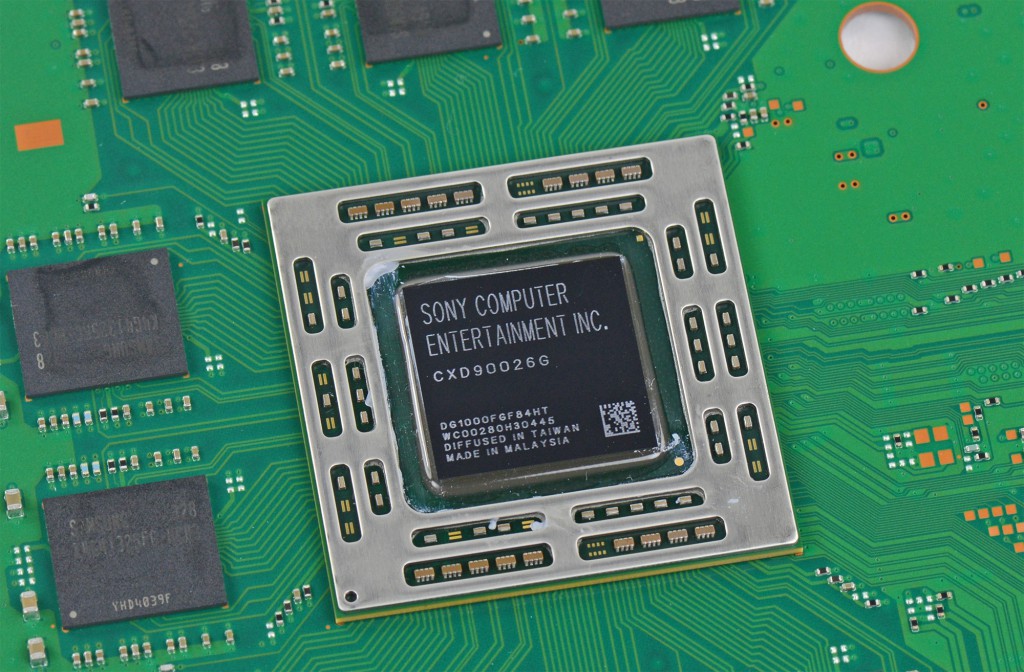Semi-custom system-on-chips for video-game consoles account for a significant portion of AMD’s sales. Many market observers have been concerned that while SoCs for Microsoft Xbox One and Sony PlayStation 4 bring in huge revenue, profit margin of such business may be negligible. While the margins of the SoCs are below the company’s average, the situation is better than anticipated and AMD expects the margins to raise.
Under the terms of the contract between AMD and its partners – Microsoft Corp. and Sony Corp. – the chip developer sells them system-on-chips for their latest game consoles at pre-determined price-ranges in volumes they demand. The prices are believed to have minimal flexibility, so AMD initially believed that it would sell the SoCs with 10 – 12 per cent (low double-digit percent) margin. Since it is in AMD’s interests to reduce its manufacturing costs in a bid to maximize its margins, the company has done a lot to cut them. The chip designer negotiated with its foundry partners regarding prices and started to use its own assembly and test facilities for the products. As a result, the margins are now higher than 15 per cent.
“Over the last few quarters, we have actually been able to extract more efficiencies from the business, working with our foundry partners in particular,” said Devinder Kumar, chief financial officer of Advanced Micro Devices, during his presentation at the Credit Suisse 18th Annual Technology Conference. “We have backend facilities where we make the product in-house assembly and test bases, extract more costs, what I will say to you is they're up from the mid-teens from operating margin standpoint and that can only get better as we move through the cycle.”

Sony PlayStation 4 SoC. Image by iFixit
When asked specifically whether AMD could increase its console chip margins to over 20 per cent, Mr. Kumar answered positively. Indirectly, this confirms that AMD will use all the opportunities it has to reduce the costs of the SoCs, which includes transitions to thinner manufacturing processes, yield improvements, optimizing designs and so on.
While 20+ per cent profit margin is well below AMD’s average gross margin of 35 per cent (in Q3 FY2014), it is considerably higher compared to the company’s original expectations for the projects. Keeping in mind the increasing role of semi-custom SoCs in AMD’s future, it is important that the company can actually sell such chips with more or less significant profit.
Discuss on our Facebook page, HERE.
KitGuru Says: It is noteworthy that AMD’s back-end assembly and test facilities were among the assets which the chipmaker did not transfer to GlobalFoundries when the latter was established in 2008 – 2009. At present AMD owns and operates three chip assembly and test facilities, one in Singapore, one in Penang, Malaysia, and one in Suzhou, China. If using own test and assembly factories allows to significantly boost margins, imagine how AMD would have thrived right now if it had started to make semi-custom chips for others back in 2006 – 2008 timeframe at its own fabs…
 KitGuru KitGuru.net – Tech News | Hardware News | Hardware Reviews | IOS | Mobile | Gaming | Graphics Cards
KitGuru KitGuru.net – Tech News | Hardware News | Hardware Reviews | IOS | Mobile | Gaming | Graphics Cards



This is definitely a positive for AMD. However, with the recent price cuts on the APU and GPU side any margin gain on the custom side should be offset. Best case scenario is Q4 margins remain in 35% range. Albeit, on much lower sales compared to Q3. Assuming AMD wasn’t sandbagging in their Q4 Sales projections.Then again, part of the price cuts could be due to better yields and margins on the APU/GPU side. Yields on 28nm chips have to be getting extremely high considering the maturity of that node.
I hope they can stop being disappointing and wake up to become real Intel challenger so people don’t have be pay $200+ for Cpu. Intel treat the consumers like an idiot….
The consumers treat themselves as idiots. Do you know how many people hope AMD to be more competitive so that they can buy cheaper Intel and Nvidia hardware? How many hope AMD to become more competitive but when they have the chance to advice someone to buy AMD hardware they instead propose Intel or Nvidia solutions? Even in cases where AMD hardware is as good or a better option.
All those who do that, they are completely morons who don’t know their own interests. And if Intel or Nvidia treats them like idiots, they have any right to do so, because those people are idiots and that’s how you should treat them.
Totally agree i’ve seen so many people propose high end i5’s for budget builds and completely ignore the fact a slightly overclocked FX6300/FX8350 can smash it for much less
As for Nvidia, with the 970 they have essentially dominated the high end value market, but i still believe AMD rules the below-£200 market
My opinion is that AMD are focusing to much on APU’s. They are great for non gaming/reaaaaaly low budget builds, but most of the people making custom rigs won’t be building these rigs. It kinda feels like AMD has forgotten the enthusiast market (the current processor range is so outdated, even with the revisions)
You see this behaviour all the time. On HotUKDeals people get really excited when Amazon match someone else, such as eBuyer’s or Shopto’s cheap prices. They then all buy from Amazon because that is who they feel comfortable buying from. Why not reward the business which brought the price down in the first place, oh and they happen to pay their taxes in the UK 😉
Yeah, cause Intel’s other competitors are killing AMD.. Wait…
AMD is going to increase its console chip margins to over 20 per cent when Nintendo jumps on board come 2015, sure Nintendo Wii U has a IBM CPU and AMD graphics but it’s going to be all AMD.
PhoneyVirus
https://twitter.com/PhoneyVirus
https://phoneyvirus.wordpress.com/
not gonna happen thy are stuck with gloflo whose process node is stiil stuck. hopeffuly gloflo pulls out a competive process node
they announced they won’t be focusing on that segment anymore no more new enthusiast cpus with new architecture